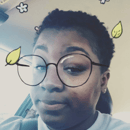Gucci recently broke the internet with their new campaign for women’s sweaters. It is a turtleneck style sweater, but there’s a section of the turtleneck cut out for the mouth with a red ring. It looks like Blackface. Correction, it is Blackface.
Now for a quick history lesson on Blackface. Blackface is a form of theatrical make-up used predominantly by non-black performers to represent a caricature of a black person. The practice gained popularity during the 19th century and contributed to the spread of racial stereotypes such as the “happy-go-lucky darky on the plantation” or the “dandified coon“… Early in the 20th century, blackface branched off from the minstrel show and became a form in its own right. In the United States, blackface had largely fallen out of favor by the turn of the 21st century and is now generally considered offensive and disrespectful, though the practice continues in other countries.
Simply put Blackface is a no-no. It may have been used as a form of “entertainment”, and I use that word very lightly, but those days are over. Gucci isn’t the first offender of using Blackface or misappropriating a culture, it’s just their turn in the hot seat.
What I don’t understand is why this insult is still considered trendy? And then it hits me; there’s still a lack of diversity in Pop Culture. I mean I already knew that, but this repeated offense confirms what I already suspected.
Whenever the word diversity is said, people automatically think this means the inclusion of People of Color (POC). Yes, POC need representation, but diversity goes beyond that. Diversity means having a variety or range. We want to see more POC, members of the LGBTQIAPK community, women, people with disabilities or disorders, people from all social classes, a pool of persons from every generation, etc. being represented. Basically, you need people who when pitching an idea, they’ll be able to tell you “this isn’t a good idea”.
As a BDAL (Business Design and Arts Leadership) Major, one of our required studies is a PEST Analysis. PEST is an acronym for political, economic, social (or socio-cultural) and technological. It’s a way of understanding how external forces impact your business… you can try to predict how your products or services will resonate with the public. One method for discovering and quantifying those factors is the PEST analysis. If college students are learning about this, you’d think companies that have been established for decades would be making use of this method.
I’ve heard people defending Gucci and other cultural perpetrators saying, “Well maybe they’re trying to pay homage or bring awareness to the issue. For starters, no. IF this were the case, there’s definitely a better way to do it; people have successfully pulled this off. Here are a few examples of how to appropriately include diversity: Old Navy Mixed Family Ad, Atlanta’s Rainbow Crosswalk, and Atypical Netflix Series (the main character is on the spectrum).
Of course, Gucci and other companies have issued apologies since being called out, but maybe if there wasn’t a lack of diversity so many apologies wouldn’t have to made. For it to be 2019, the world is still so behind. Calling companies out for their misrepresentation of race, cultural appropriation, and blatant disrespect is a step in the right direction, but we still have a long way to go.



